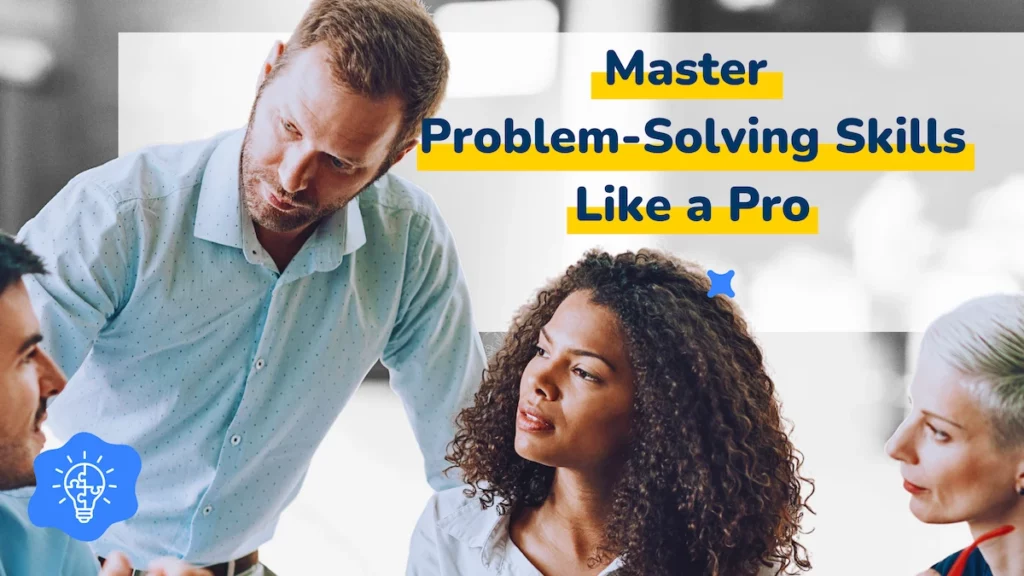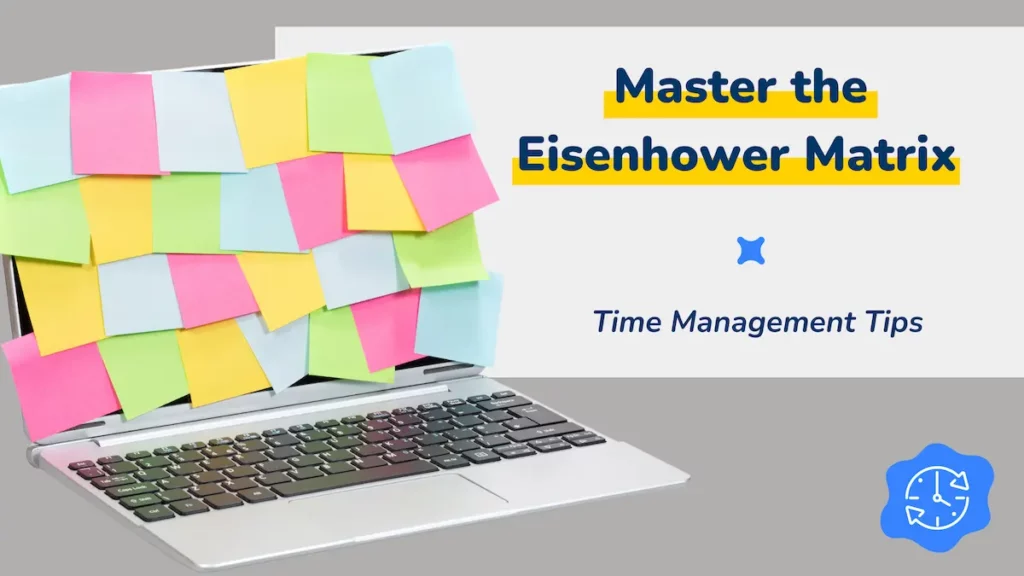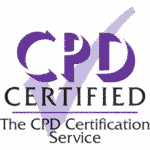Identify and Understand the Problem
Accurate Problem Identification
The first crucial step in effective problem-solving is accurately identifying the problem. It is essential to spend adequate time analysing the issue to understand its core components. By doing so, you ensure that you are addressing the actual problem rather than just its symptoms.
- Ask Probing Questions: Start by asking detailed questions to uncover the nature of the problem. What exactly is the issue? When did it start? How is it impacting the organisation?
- Involve Stakeholders: Engage with those affected by the problem to gather different perspectives. This helps in gaining a holistic view of the issue.
Root Cause Analysis
Once the problem is identified, it’s important to determine its root cause. Tools like the “5 Whys” technique can be very effective. By repeatedly asking “why” the problem occurs, you can drill down to the underlying cause, which must be addressed to prevent recurrence.
Research and Gather Information
Comprehensive Information Gathering
Understanding the underlying systems and practices related to the problem is essential. Engage with relevant stakeholders to gather comprehensive information. This helps you appreciate the nuances of the issue and devise more effective solutions.
- Data Collection: Gather quantitative and qualitative data that can provide insights into the problem.
- Stakeholder Interviews: Conduct interviews or surveys with key stakeholders to understand their views and experiences related to the issue.
Analyse the Information
After collecting the necessary information, analyse it to identify patterns, trends, and insights. This analysis can reveal critical factors contributing to the problem and highlight potential areas for intervention.
Visualise the Problem
Creating Visual Representations
Creating a visual representation of the problem can aid in understanding its complexities. Tools such as diagrams or flowcharts provide a clear view of the issue, making it easier to identify potential solutions.
- Flowcharts: These can map out the process and identify where breakdowns occur.
- Cause-and-Effect Diagrams: Also known as fishbone diagrams, these help in pinpointing the root causes of a problem.
Benefits of Visualisation
Visualisation helps in breaking down the problem into manageable parts, making it easier to communicate with others and collaborate on finding solutions. It also aids in identifying areas that require more detailed analysis.
Brainstorm Creative Solutions
Encouraging Creativity
Approach problem-solving with creativity. Use brainstorming sessions to generate a variety of solutions. Encouraging different perspectives can lead to innovative approaches that might not be immediately obvious.
- Diverse Teams: Include team members from different backgrounds and areas of expertise to foster diverse thinking.
- Brainstorming Techniques: Use techniques like mind mapping, SCAMPER (Substitute, Combine, Adapt, Modify, Put to another use, Eliminate, and Reverse), and lateral thinking exercises to stimulate creativity.
Evaluating Ideas
After brainstorming, categorise and evaluate the ideas. Use criteria such as feasibility, potential impact, and alignment with organisational goals to assess the ideas. This helps in narrowing down the list to the most viable solutions.
Evaluate and Select the Best Solution
Criteria-Based Evaluation
Once you have a list of potential solutions, evaluate them against criteria such as feasibility, cost, and time. Consider the potential risks and benefits of each option, and involve team members in the decision-making process to gain diverse insights.
- Feasibility Studies: Conduct feasibility studies to assess whether the proposed solutions are practical and achievable.
- Cost-Benefit Analysis: Analyse the costs and benefits associated with each solution to determine which offers the best return on investment.
Decision-Making Tools
Use decision-making tools like SWOT analysis (Strengths, Weaknesses, Opportunities, Threats) and decision matrices to systematically compare and select the best solution. These tools provide a structured approach to decision-making, ensuring that all relevant factors are considered.
Implement and Monitor the Solution
Developing an Action Plan
After selecting a solution, develop a detailed action plan outlining the steps needed to implement it. Assign responsibilities, set timelines, and allocate resources to ensure smooth execution.
- Project Management Techniques: Use project management tools and methodologies, such as Gantt charts and Agile frameworks, to plan and track the implementation process.
Monitoring Progress
Monitor the progress and make necessary adjustments to ensure the problem is resolved effectively. Continuous evaluation helps in fine-tuning the approach and achieving the desired outcomes.
- Key Performance Indicators (KPIs): Establish KPIs to measure the success of the implemented solution.
- Feedback Loops: Create mechanisms for ongoing feedback from stakeholders to identify any issues early and adjust the plan as needed.
Enhance Problem-Solving Skills with inGeniusly
Hands-On Approach to Problem Solving
inGeniusly offers a hands-on approach to enhancing your problem-solving skills. By providing practical exercises and real-world scenarios, inGeniusly ensures that you can apply the techniques you learn in a meaningful way. This approach helps solidify your understanding and ability to implement problem-solving strategies effectively.
Integrating Complementary Skills
Problem-solving is most effective when combined with other cognitive skills such as focus, critical thinking, lateral thinking, and attention to detail. inGeniusly integrates these complementary skills into its training programs, providing a comprehensive skill set that enhances your overall cognitive performance.
- Focus: By improving your ability to concentrate, you can better identify the core aspects of a problem without getting distracted by irrelevant details.
- Critical Thinking: Enhances your ability to analyse information logically and systematically, ensuring that your solutions are well-founded.
- Lateral Thinking: Encourages creative and unconventional approaches to problem-solving, leading to innovative solutions.
- Attention to Detail: Ensures that all aspects of the problem and solution are carefully considered, reducing the risk of oversight.
Organising Your Thoughts Effectively
One of the key challenges in problem-solving is organising your thoughts clearly and logically. inGeniusly helps you develop strategies to structure your thinking processes, making it easier to identify the actual problem and devise effective solutions.
- Mind Mapping: Helps visualise relationships between different aspects of the problem.
- Structured Problem-Solving Models: Provides frameworks to systematically address each stage of the problem-solving process.
Accurate Problem Identification
By helping you organise your thoughts effectively, inGeniusly ensures that you can identify the actual problem more accurately. This precision in problem identification is crucial for developing effective and sustainable solutions.
The Result: Enhanced Problem-Solving Abilities
Through its hands-on approach, integration of complementary skills, and focus on effective thought organisation, inGeniusly significantly enhances your problem-solving abilities. This comprehensive training ensures that you are well-prepared to tackle complex challenges and contribute to your business’s success.
Structure is freedom
Improving problem-solving skills involves a structured approach: identifying the problem, gathering information, visualising the issue, brainstorming solutions, and evaluating the best course of action. Practising these steps consistently will enhance your ability to tackle challenges efficiently and effectively.
By following these strategies and leveraging the hands-on, integrated training provided by inGeniusly, you can develop robust problem-solving skills that are highly valued in any professional setting. This comprehensive approach ensures that you are prepared to address and resolve issues, contributing to your success and the success of your organisation.
FAQs
Why is it important to identify the root cause of a problem?
Identifying the root cause ensures that you are addressing the actual problem rather than just treating the symptoms. This prevents recurrence and leads to more effective and sustainable solutions.
How can visualisation tools help in problem-solving?
Visualisation tools like flowcharts and cause-and-effect diagrams help break down complex problems into manageable parts, making it easier to understand and communicate the issue. They also aid in identifying areas that need further analysis.
What are some effective brainstorming techniques?
Effective brainstorming techniques include mind mapping, SCAMPER, and lateral thinking exercises. These techniques encourage creative thinking and help generate a wide range of potential solutions.
How do decision-making tools aid in selecting the best solution?
Decision-making tools like SWOT analysis and decision matrices provide a structured approach to evaluating potential solutions. They ensure that all relevant factors are considered, helping you make informed and balanced decisions.
What role do monitoring and feedback play in problem-solving?
Monitoring and feedback are crucial for ensuring that the implemented solution is working effectively. They help identify any issues early, allowing for adjustments to be made to achieve the desired outcomes.
How does inGeniusly enhance problem-solving skills?
inGeniusly enhances problem-solving skills through a hands-on approach that integrates complementary skills such as focus, critical thinking, lateral thinking, and attention to detail. By helping you organise your thoughts effectively and accurately identify problems, inGeniusly ensures you develop robust problem-solving abilities.








